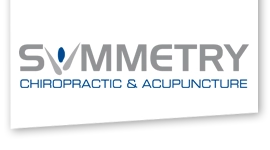The Role of SoftWave Therapy in Treating Arthritis-Related Pain in Naperville IL
The Role of SoftWave Therapy in Treating Arthritis-Related Pain in Naperville IL

Living with arthritis means living with persistent joint pain, stiffness, and limited mobility. For many patients, traditional treatments such as medications, injections, or even surgery don’t always provide lasting relief or come with unwanted side effects. Fortunately, advancements in non-invasive therapies have opened new doors for pain management. One promising option gaining attention is SoftWave Therapy in Naperville IL.
SoftWave Therapy uses acoustic sound waves to stimulate the body’s natural healing response at the cellular level. This innovative treatment offers an effective and non-invasive solution for managing arthritis-related pain without drugs or downtime. For arthritis patients seeking long-term relief and improved joint function, SoftWave Therapy presents an encouraging alternative worth exploring.
We’ll break down how SoftWave Therapy works, its specific benefits for arthritis sufferers, and what to expect from treatment sessions. Whether you’re newly diagnosed or have been managing arthritis for years, this guide is designed to help you make informed decisions about incorporating SoftWave Therapy into your care plan.
How SoftWave Therapy Works: The Science Behind the Sound Waves in Naperville IL
SoftWave Therapy is a non-invasive treatment that uses electrohydraulic acoustic waves to stimulate healing in injured or inflamed tissues. These sound waves penetrate deep into the soft tissue without damaging the skin or surrounding structures. The process, known as mechanotransduction, sends signals to cells, encouraging regeneration and reducing inflammation.
For arthritis patients, these waves help disrupt chronic inflammation in the joints while increasing blood flow and the production of natural healing factors. This stimulation encourages the repair of cartilage and soft tissue that has been degraded by arthritis. As a result, pain levels decrease and joint function improves over time.
Unlike high-intensity shockwave therapy, SoftWave uses a patented low-intensity wave that provides a more comfortable experience for patients while still reaching deep into affected joints. This makes it especially appealing for those with arthritis in weight-bearing areas like the knees, hips, or spine, where pain can be debilitating and surgery may not be an option.
Patients typically begin noticing improvements after just a few sessions, and because there’s no medication or incision involved, it poses minimal risk. For individuals looking for an alternative to injections or surgery, SoftWave Therapy’s biologic approach can be a game changer in managing arthritis-related pain.
Benefits of SoftWave Therapy for Arthritis Patients
SoftWave Therapy offers a number of key advantages for individuals suffering from arthritis. One of the most significant benefits is its ability to reduce chronic joint pain without the use of pharmaceuticals. This is especially important for patients who may be concerned about the long-term effects of anti-inflammatory drugs or are seeking to reduce their medication intake.
The therapy also improves circulation and cellular metabolism in targeted joints. Increased blood flow delivers essential nutrients and oxygen to damaged tissues, helping them recover faster and reducing stiffness. Over time, patients often report not just pain relief, but improved range of motion and better joint function.
Another major benefit is the non-invasive nature of the treatment. There is no cutting, no needles, and no recovery time required, which makes it a practical option for individuals who may not be candidates for surgery. Because SoftWave Therapy does not rely on corticosteroids or invasive procedures, it poses fewer risks and can be repeated as necessary without long-term harm.
Patients frequently experience relief within the first few sessions, though optimal results usually occur after a complete treatment series. For many, this means fewer flare-ups, longer periods of comfort, and greater confidence in their ability to stay active. These cumulative effects make SoftWave Therapy a valuable addition to arthritis management plans.
Comparison: SoftWave Therapy vs Traditional Arthritis Treatments
Traditional arthritis treatments often include medications such as NSAIDs or corticosteroids, physical therapy, and in more severe cases, joint injections or surgery. While these options can be effective, they come with limitations and potential side effects. For example, long-term use of NSAIDs can cause gastrointestinal issues, while repeated steroid injections may weaken joint structures.
In contrast, SoftWave Therapy offers a drug-free and surgery-free alternative. Instead of suppressing symptoms temporarily, it works by stimulating the body’s own healing mechanisms. This results in more sustainable improvement in joint health over time.
Unlike physical therapy, which requires active patient participation and often involves discomfort during sessions, SoftWave Therapy is passive and painless. Patients can sit or lie down comfortably while the treatment is administered. It also typically requires fewer sessions than ongoing physical therapy, making it more convenient for busy individuals.
Surgical procedures, although sometimes necessary, involve significant recovery time, potential complications, and substantial costs. SoftWave Therapy, by comparison, has no downtime, minimal risk, and can often be performed in under 30 minutes per session.
When compared side by side, SoftWave Therapy presents a compelling option—particularly for patients seeking safer, non-invasive, and longer-lasting arthritis pain relief.
What to Expect During a SoftWave Therapy Session
Understanding what happens during a SoftWave Therapy session can help alleviate any anxiety and make patients feel more comfortable with this treatment option. Typically, a session lasts between 15 to 30 minutes, depending on the area being treated and the severity of symptoms.
The process begins with a consultation to identify the most painful or affected joints. A trained provider will then apply a conductive gel to the treatment area, which helps transmit the acoustic waves more efficiently. Using a handheld device, the provider delivers the SoftWave pulses in a targeted pattern. Most patients describe the sensation as a mild tapping or pulsing—rarely painful and often well-tolerated.
There’s no need for anesthesia, and patients remain fully clothed except for the treatment area. After the session, some people may experience temporary redness or mild soreness, but these effects typically subside quickly. Importantly, there's no restriction on activity post-treatment, so patients can return to their normal routines immediately.
Treatment frequency varies by individual, but many arthritis patients begin with one to two sessions per week for several weeks, followed by maintenance sessions as needed. Providers will tailor the treatment plan based on progress and goals. Overall, SoftWave Therapy offers a smooth and straightforward experience with minimal disruption to daily life.
Who is a Good Candidate for SoftWave Therapy?
SoftWave Therapy is a versatile treatment, but it’s especially beneficial for certain arthritis patients. You may be a good candidate if you:
- Have been diagnosed with osteoarthritis or rheumatoid arthritis
- Experience chronic joint pain that affects mobility
- Want a non-invasive alternative to surgery or injections
- Have not responded well to conventional medications
- Are seeking drug-free pain relief with minimal side effects
- Prefer treatments that allow for quick recovery and continued activity
- Want to complement physical therapy or other conservative care
This therapy is generally safe for most individuals, including older adults, as long as there are no contraindications like pregnancy, active infections at the treatment site, or implanted electrical devices such as pacemakers.
However, it’s important to undergo an evaluation by a qualified healthcare provider before starting treatment. This ensures that SoftWave Therapy is the right fit for your type of arthritis, medical history, and current health condition. For many patients, it becomes a critical part of a long-term strategy for managing arthritis-related pain without heavy reliance on medications or invasive procedures.
Success Rates and Patient Outcomes with SoftWave Therapy
Many arthritis patients report significant improvements after undergoing SoftWave Therapy. Some of the most commonly reported outcomes include:
- Noticeable pain reduction after just a few sessions
- Increased joint mobility and decreased stiffness
- Improved function in everyday activities
- Decreased reliance on pain medications
- Longer intervals between arthritis flare-ups
- A more active and fulfilling lifestyle
In clinical settings, success rates vary based on the severity of arthritis and patient compliance with treatment schedules. However, a large percentage of patients experience moderate to substantial relief, particularly those with mild to moderate osteoarthritis.
Additionally, patient satisfaction is generally high due to the non-invasive nature of the therapy and the absence of major side effects. Unlike surgery or injections, there’s no risk of infection or long-term tissue damage, making it a preferred choice for those prioritizing safety.
While not a cure for arthritis, SoftWave Therapy offers meaningful symptom relief that can enhance quality of life. When combined with a healthy lifestyle and other supportive therapies, it becomes a powerful tool for managing arthritis-related pain effectively over the long term.
If you're struggling with arthritis-related pain and are seeking a non-invasive, drug-free alternative to traditional treatments, SoftWave Therapy may be the solution you've been searching for. Many patients are already experiencing reduced pain and improved mobility thanks to this innovative approach.
To explore whether SoftWave Therapy is right for you, contact Symmetry Chiropractic & Acupuncture in Naperville, Illinois. Under the expert care of Dr. Timothy Erickson, you’ll receive a personalized assessment and a treatment plan tailored to your specific needs and goals.
Take the first step toward long-term arthritis relief—schedule your consultation with Symmetry Chiropractic & Acupuncture today and discover how SoftWave Therapy can help you move more freely and live more fully.
OFFICE HOURS
Monday
9:30am - 12:30pm
3:00pm - 6:00pm
Tuesday
9:30am - 12:30pm
3:00pm - 6:00pm
Wednesday
9:30am - 12:30pm
3:00pm - 6:00pm
Thursday
9:30am - 12:30pm
3:00pm - 6:00pm
Friday
9:30am - 12:30pm
3:00pm - 6:00pm
Saturday
9:30am - 12:30pm
Sunday
Closed
Symmetry Chiropractic & Acupuncture
3108 Illinois Rte 59 Ste 124
Naperville, IL 60564



